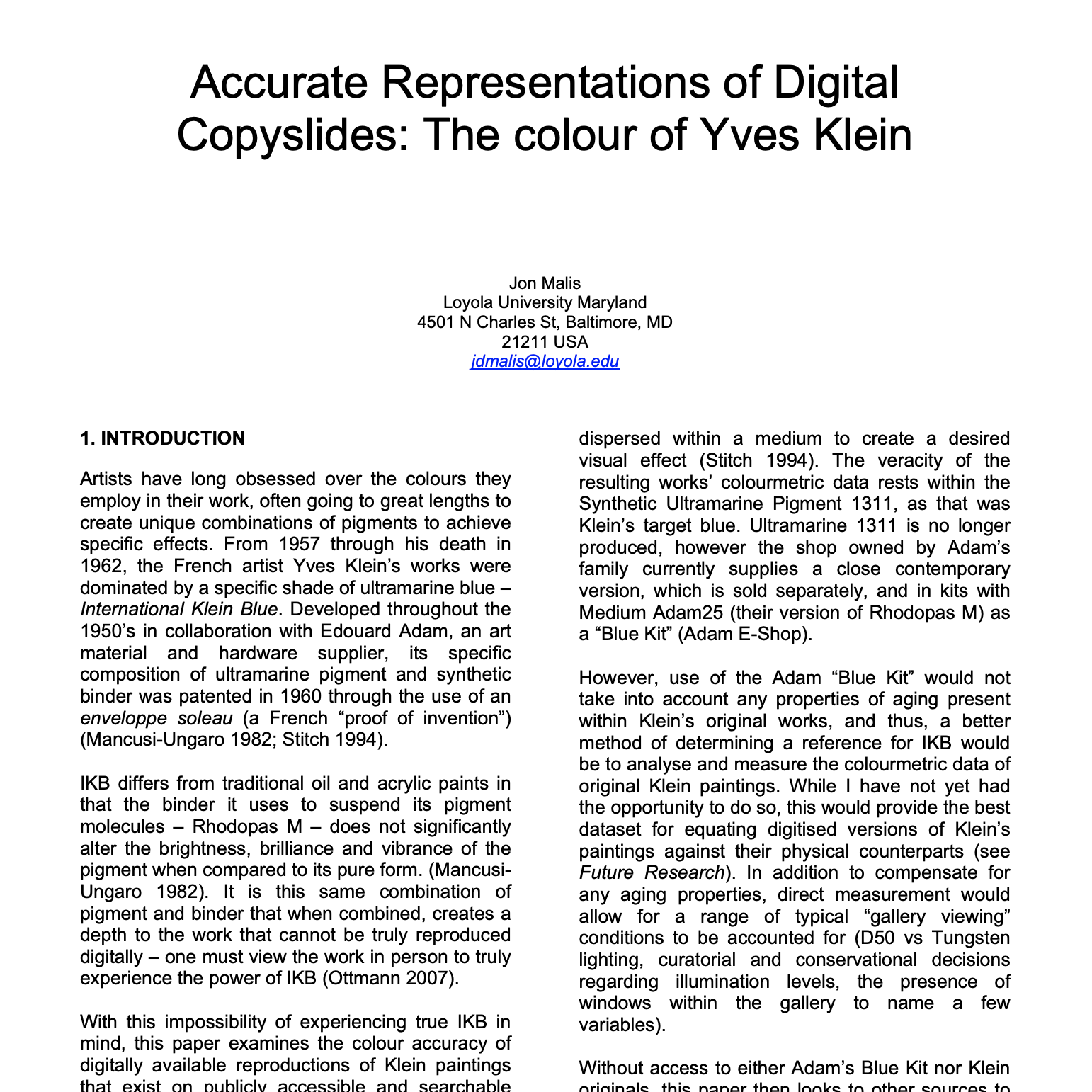Accurate Representations of Digital
Copyslides: The colour of Yves Klein
Proceedings of EVA London 2020
Artists have long obsessed over the colours they employ in their work, often going to great lengths to create unique combinations of pigments to achieve specific effects. From 1957 through his death in 1962, the French artist Yves Klein’s works were dominated by a specific shade of ultramarine blue – International Klein Blue. Developed throughout the 1950’s in collaboration with Edouard Adam, an art material and hardware supplier, its specific composition of ultramarine pigment and synthetic binder was patented in 1960 through the use of an enveloppe soleau(a French “proof of invention”) (Mancusi-Ungaro 1982; Stitch 1994).
IKB differs from traditional oil and acrylic paints in that the binder it uses to suspend its pigment molecules – Rhodopas M – does not significantly alter the brightness, brilliance and vibrance of the pigment when compared to its pure form. (Mancusi-Ungaro 1982). It is this same combination of pigment and binder that when combined, creates a depth to the work that cannot be truly reproduced digitally – one must view the work in person to truly experience the power of IKB (Ottmann 2007).
With this impossibility of experiencing true IKB in mind, this paper examines the colour accuracy of digitally available reproductions of Klein paintings that exist on publicly accessible and searchable websites
